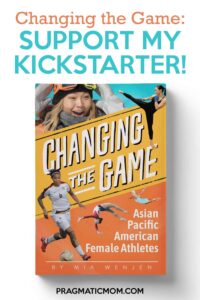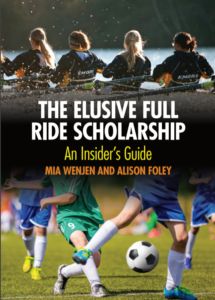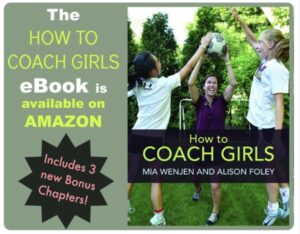My niece did not get into her top choice college this past year. It was a little devastating for everyone in our extended family because she was the kid who read, and very well at that, at age 3. Instead, she is attending her safety school. Thank god for the safety school! It turns out that the safety school is a state school so it’s well priced, but it doesn’t get her out of Ohio, where much effort and money was spent in touring her around Harvard and sending her to fancy boarding camps at both Wellesley College and Yale.
There is no doubt that she’s a smart and talented kid with exceptional creative writing chops, fluency in French, and well-polished social skills. And she did lots of stuff including Tennis Team, Debate Team, violin/city orchestra, plus a myriad of extracurricular activities that only her mother can remember. Her test scores were pretty darn good and her grades were decent. So what happened? There is a big difference between dream school, backup school, and safety school. What went wrong? And more importantly, how can we avoid this?
It used to be back in my day (early ’80s; yes, dating myself ) that the top schools were accepting about 10% of the class or even a tad less through early decision/early decision. The tide started changing, I believe, when colleges were ranked by criteria that included percent accepted. That is to say, if we, the college, accepted you, the kid, did you actually show up in September? Harvard, Yale and Princeton … and maybe Stanford, MIT, and a few other elite universities may not have had a problem with this with acceptance percentages in the 70-80% but other colleges trying to claw their way up the rankings suffered mightily from accepting a strong candidate who turned them down for a better school. Hence early decision came into play because it locks up the applicant: if you apply early decision and get accepted, you have committed lock, stock, and barrel. Now the percentage of the class from early decision/early action is closer to 80%. Whoa! That’s a huge jump. Did you all catch that — from 10% to 80%!
Now, if you are not accepted as an early decision, you get the song and dance of being thrown back into the pile to be reconsidered. But think about this: you are now competing against applicant superstars who consider your dream school as their backup school or even their safety school! Because … they played their early decision card higher up on the food chain. AND, because the class is almost full from 80% early decisions/early actions, there are now just a handful of spots with a zillion applicants. These are not great odds for anyone. So this is a game of winner take all.
YOU MUST CHOOSE YOUR EARLY DECISION COLLEGE BY CONSIDERING WHERE YOU ARE LIKELY TO BE ACCEPTED. THIS IS NOT THE TIME FOR ASPIRATIONAL WISHFUL THINKING! This was my niece’s fatal tactical error.
I have known top students who have committed early decision, gotten accepted, and then walked away. This was due because her financial aid package was NOT presented along with the early decision letter leaving her family to wonder if they could actually afford to send her here. I am not sure if this has been addressed by colleges but it would make sense that they would present both acceptance letter and financial aid package together. Let me know what your experiences have been.
How to Get into College through Early Decision
So, how do you game the system?
- Do not choose your early decision college based on what school you fell in love with (my niece’s problem). Be realistic. Are you in the ballpark? If your scores and grades do not fall within the median range, your extracurriculars or letters of recommendation will not likely get you in.
- Exceptions to this rule: star athletes (as in the potential to be All American), legacy children with VERY generous ancestors, heavily recruited minority (WHICH DOES NOT INCLUDE ASIANS! Native Americans are the most sought after. Latinos and African Americans are always in demand. The rest, not so much!), inner-city/extremely low income, and maybe, just maybe, applying from an obscure state that does not typically get a lot of applicants (like Montana, Wyoming, Alaska or Hawaii — Alaska being the most sought after).
- When you get thrown back into the pile, the squeaky wheel does get noticed and often gets the grease. A sincere letter-writing campaign is in order. School sleepover visits are also recommended. Now is the time to step it up. Be creative but do not become a pain in the ass as that can backfire!
- This works. Case in point: My sister, a piano teacher, wrote a letter so convincing that her piano student actually was accepted into a top school, let’s call it UCLA (actually, it was UCLA), after being REJECTED. Yes, folks. REJECTED to ACCEPTED. It can happen! And why did it work? Her letter explained the extent to which her piano studio’s rigorous program was, in fact, a major extracurricular as it included 12 performances a year, several competitions both local and statewide, as well as a full recital program graded and ranked by outside judges. And more stuff that I am not even aware of.
- College counseling is becoming much like financial planning. Unless you are well skilled or connected in this field, you might consider the expense of a private college counselor for your child if you attend a public school with a ratio of, no joke, 500:1. It does take careful planning and strategy to get into your dream school as you can see from just the Early Decision politics which is just ONE facet of the application process!
The article is here. Key paragraphs below. Good luck to all! And take solace in the fact that college is now an ends to a means and this means is … graduate school. Graduate school is the new college degree. And so your child can do this all over again, wiser and more successful in his or her efforts. And the beauty of graduate school is that you, the parent, do not have to get involved in the application process!
———————
Early Action Could Aid in Admission, Report Finds
By JACQUES STEINBERG
A report released Wednesday by an association of guidance counselors and admissions officers could be worth a look. It provides new evidence for those who believe that applying to college early in the academic year — or, more specifically, submitting applications under binding early-decision programs — increases the likelihood of acceptance.
- Nearly three of every four students who applied last year under such programs, which are offered by many of the nation’s most selective colleges, were accepted, compared with just over half who applied to the same colleges in the main application round, according to the annual report, “The State of College Admission,” by the National Association for College Admission Counseling.
- Critics of early-admission programs argue that they represent a way for well-off and connected high school students to game the system.
- To that end, the report provided new measurements of how the nation’s poorest high school graduates, as well as those who are black and Hispanic, continue to lag behind their peers in going to college. Only 58 percent of high school graduates from the bottom quarter nationally, as ranked by family income, went to college in 2008, compared with 87 percent from the highest-earning bracket, according to the report.
- And while black and Hispanic students represented 33 percent of “the traditional college-aged population” in 2008, the report noted, only 25 percent of the students enrolled in colleges and universities that year were black or Hispanic.
To examine any of the items listed, please click on image of item.
As an Amazon Associate, I earn from qualifying purchases.
p.s. Related posts:
How to Draft Your College Application Essay THIS SUMMER!
How To Write a Great College Application Essay
Why Full Ride Athletic Scholarships Are Rare
How To: Get an Athletic Scholarship
Thank you Coach Tarabelli for The Elusive Full Ride Scholarship Review!
Tackling College Sports podcast for The Elusive Full Ride Scholarship Book Launch!
The Elusive Full Ride Scholarship BOOK BIRTHDAY!
BEST #OWNVOICES CHILDREN’S BOOKS: My Favorite Diversity Books for Kids Ages 1-12 is a book that I created to highlight books written by authors who share the same marginalized identity as the characters in their books.










As a private college counselor, I do not encourage any of my students to apply early decision unless they are insistent upon it. I have seen too many kids through the years regret the decision. The fact that it is binding is more than most students are ready to commit to at this time. Not being able to compare financial aid offers is a big turnoff. Early action is another matter because a student has nothing to lose, but early decision does not seem to benefit anyone but the colleges.
That is very good advice. Do you work with students virtually or do they need to be in your neck of the woods?